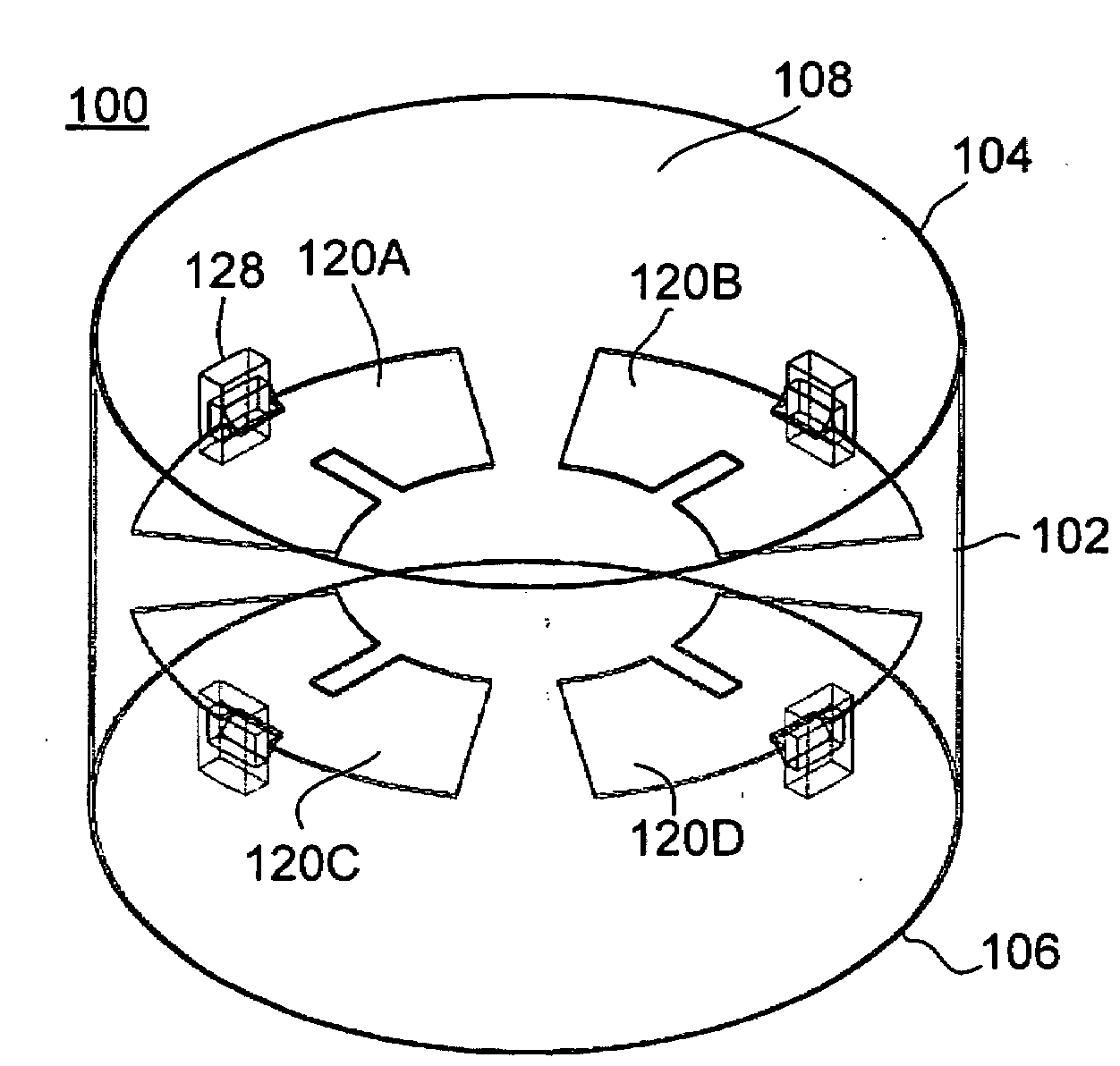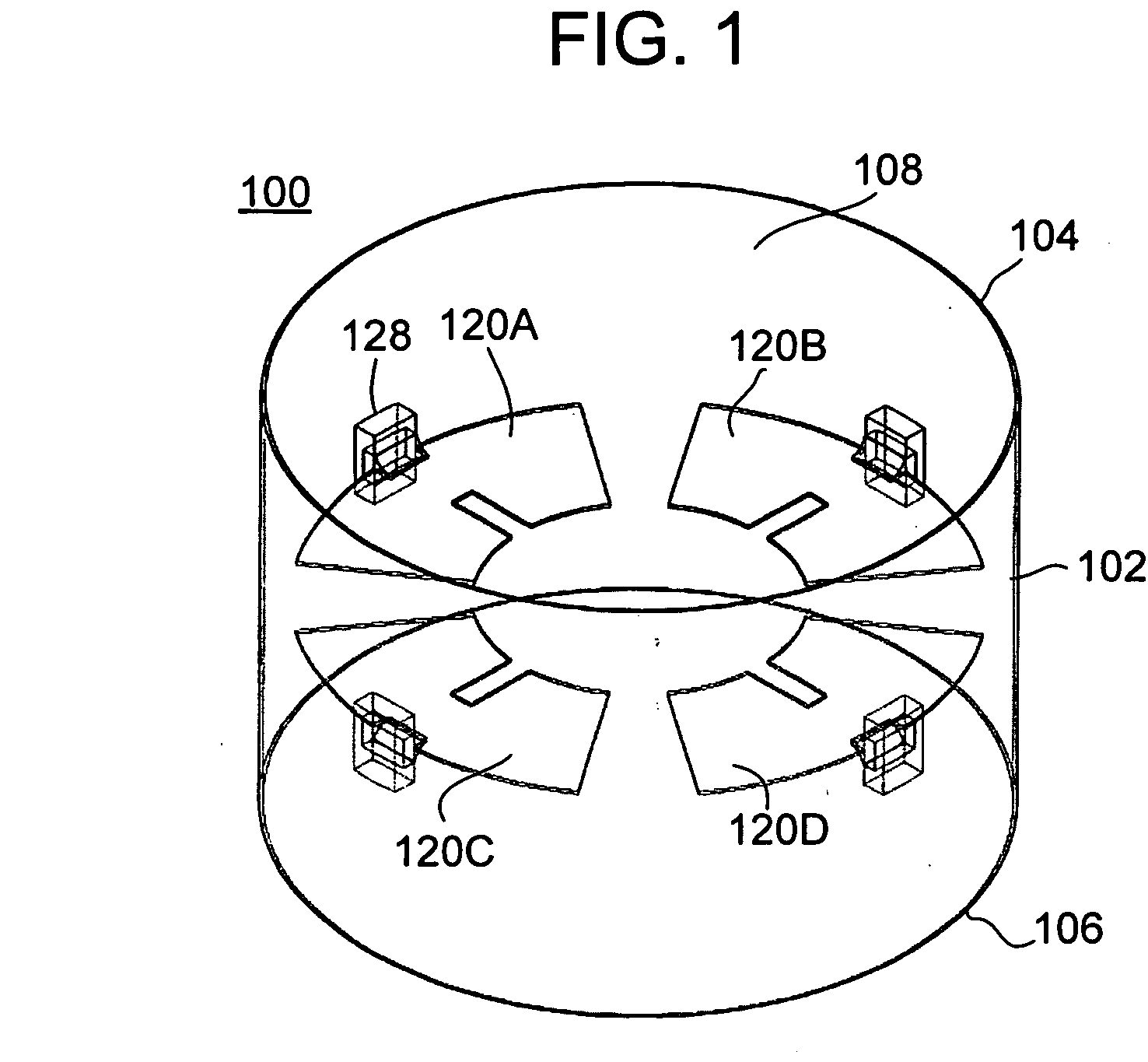Acoustic Drum With Resonators Disposed Therein
- Summary
- Abstract
- Description
- Claims
- Application Information
AI Technical Summary
Benefits of technology
Problems solved by technology
Method used
Image
Examples
Embodiment Construction
[0029]With reference to the drawings, wherein like numerals indicate like elements, there is shown in FIGS. 1-2A a drum 100. The drum 100 includes a shell 102 having first and second, spaced apart ends 104, 106, and an interior surface 108 defining an interior volume 110. As best seen in FIG. 3, a drumhead 24 may be stretched over the first end 104 of the shell 102 and secured using a rim 26 and bolts 28. The rim engages a bead 25 of the drumhead 24 in order to even stretch the drumhead 24 over the first end 104 of the shell 102. Although not required, a second drumhead (not shown) of the same or similar construction as the drumhead 24 may be employed and stretched over the second end 106 of the shell 102.
[0030]One or more resonators 120A, 120B, 120C, 120D, are coupled to the inside surface 108 of the shell 102. In particular each resonator 120 is coupled at one edge (for example, edge 122A) thereof in lever fashion to the interior surface 108 of the shell 102. The drum 100 may incl...
PUM
 Login to View More
Login to View More Abstract
Description
Claims
Application Information
 Login to View More
Login to View More - R&D
- Intellectual Property
- Life Sciences
- Materials
- Tech Scout
- Unparalleled Data Quality
- Higher Quality Content
- 60% Fewer Hallucinations
Browse by: Latest US Patents, China's latest patents, Technical Efficacy Thesaurus, Application Domain, Technology Topic, Popular Technical Reports.
© 2025 PatSnap. All rights reserved.Legal|Privacy policy|Modern Slavery Act Transparency Statement|Sitemap|About US| Contact US: help@patsnap.com



